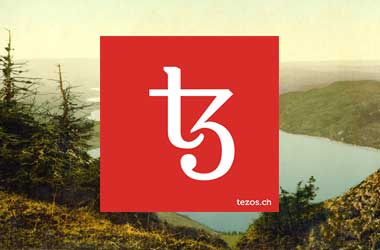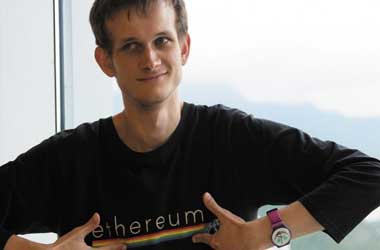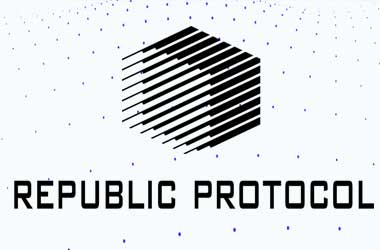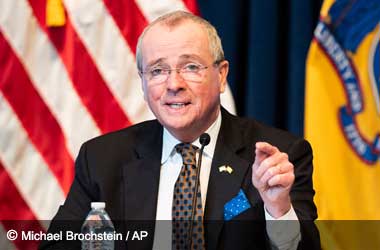 The blockchain project Tezos (XTZ), which remained stalled for over seven months, has started moving forward, following the resignation of Johann Gevers, the president of the Tezos Foundation.
The blockchain project Tezos (XTZ), which remained stalled for over seven months, has started moving forward, following the resignation of Johann Gevers, the president of the Tezos Foundation.
The Tezos Foundation has invited applications from developers to be posted in Paris. The Foundation aims to recruit 35-40 programmers to achieve the primary objective of creating the Tezos protocol.
Last July, Tezos commenced its ICO, and raised $232 million in Bitcoin and Ethereum for its blockchain project. The amount, which was a record at that time was raised in 13 days. The amount raised is now pegged at around $400 million, considering the appreciation in the price of Bitcoin and Ethereum in the last few months.
Squabble between Tezos co-founders and Swiss Foundation
Less than three months after the successful ICO, the Ivy-League educated Kathleen Breitman and her husband Arthur Breitman, the young co-founders of Tezos, accused Johann Gevers of trying to embezzle money and “acting as a roadblock to the mission.” The Breitmans also called for the resignation of Gevers who looked after the coin offering and development of the Tezos blockchain.
Gevers retaliated by accusing the Breitmans of acting against Tezos’ interests. Breitman’s attorney promptly sent a 46 page letter to the other two members of the three member board, calling for the removal of Gevers. The letter also suggested giving a “substantial” role to the co-founders, while limiting the responsibilities of the Foundation. The attorney’s letter also accused Gevers of “self-dealing, self-promotion and conflicts of interest.”
Through an email, the other two board members suggested Gevers to step down for a month, while they investigate. However, Gevers refused to step down as he felt that Arthur has attempted a character assassination. Furthermore, Gevers also argued that Arthur’s statement was misleading and outright lies. He went to the extent of saying that the other two board members are “attempting an illegal coup.”
Johann Gevers’ retaliation
Gevers was of the opinion that Breitmans were trying to control the Foundation as if it were their own private enterprise. He further accused the co-founders of trying to bypass the foundation’s legal structure and interfere with management and operations. Gevers pointed out that most of the project delays were due to such unwanted interference from the Breitmans. In short, Gevers considered that Breitmans were putting the project at risk.
Reason for the misunderstanding
According to Swiss law, the Tezos Foundation is supposed to be independent. However, Tezos has an unusual legal structure. The Foundation paid for the acquisition of a company run by the Breitmans, while spending a major portion of the capital raised through the ICO to develop and market the platform. Notably, Breitmans control the Tezos source code through a Delaware company. The complicated setup has even raised questions regarding the validity of the Foundation under the Swiss laws.
Gevers’ plan to reboot
In January Gevers stated that he will be relaunching the project with an all-Swiss team at the helm. Gevers also unilaterally vetoed applications of experienced candidates who were willing to join the Foundation. Supporters of Tezos Foundation believed that the applicants had the experience and knowledge to provide the necessary leadership and impetus for progress in the project.
By doing so, Gevers alienated himself from Breitmans, Foundation colleagues, developers, cryptospecialists, more importantly, the Tezos community. The only thing that kept the spirit alive was the project related activity in GitHub.
Gevers’ resignation and formation of new board
While the bitter fight was going on, Ryan Jesperson, a Utah based investor in Tezos ICO and former executive of a fintech startup, started to campaign for the removal of Gevers. In the process Jesperson setup T2 Foundation, a rival Swiss association to begin the launch of Tezos network. T2 Foundation’s council included investors such as Olaf Carlson-Wee, manager of the cryptocurrency hedge fund Polychain.
As pressure mounted, in early February, Gevers stepped down. Before that he published a blog post indicating that he will use the project’s proceeds to hire new staff. However, the post was deleted soon. The Foundation announced that Lars Haussmann will join the board and fill up the seat which became vacant in December. The Tezos Foundation also stated that Gevers had stepped down voluntarily, but will continue to render his support for the success of the project.
To resolve issues, Jesperson was inducted into the board of Tezos Foundation. Jesperson replaced Gevers as the president of the Tezos Foundation and relocated to Zug, Switzerland. Michel Mauny, who was on the board of T2 Foundation also joined the board of Tezos Foundation. He replaced Diego Olivier Fernandez Pons.
A few days later, the Tezos Foundation board was expanded to include Alstom Digital Mobility senior vice president Pascal Cléré, Polychain founder Olaf Carlson-Wee, Valais Academic Association co-president Marylène Micheloud and venture capitalist Hubertus Thonhauser.
Launch of Token
The formation of new board has cleared the way for the release of Tezos tokens (XTZ), referred to as “tezzies.” The token will facilitate “smart contracts”. The Tezos network aims to take the mighty Ethereum network head-on.
The Tezos team has recently tweeted that things are moving fast on their side.
Following the expansion of the Board, the Tezos Foundation is strengthening its cooperation with the core development team and is providing additional resources and help to support and expand the team. https://t.co/pHstyMaCWA
— Tezos Foundation (@TezosFoundation) March 2, 2018
Long-term issues
Even though the project has received so much attention, it may take years to see visible results. Similar to other ICOs, the success of the Tezos network depends on the developers’ ability to understand and create laudable real-world solutions. To use the Tezos network, developers should be proficient in a specialized programming language named OCaml. The Tezos Foundation will set aside a considerable amount raised through the ICO to facilitate learning of the language at Inria, the French National Institute for computer science and applied mathematics.
The rules governing the Tezos tokens clearly say that investors are taking a risk and cannot claim anything in return. Furthermore, the investment is considered only as a donation and the tokens offered were an act of goodwill. Therefore, the investors in Tezos tokens may have to wait for years to realize returns from the project.

 United States
United States United Kingdom
United Kingdom















